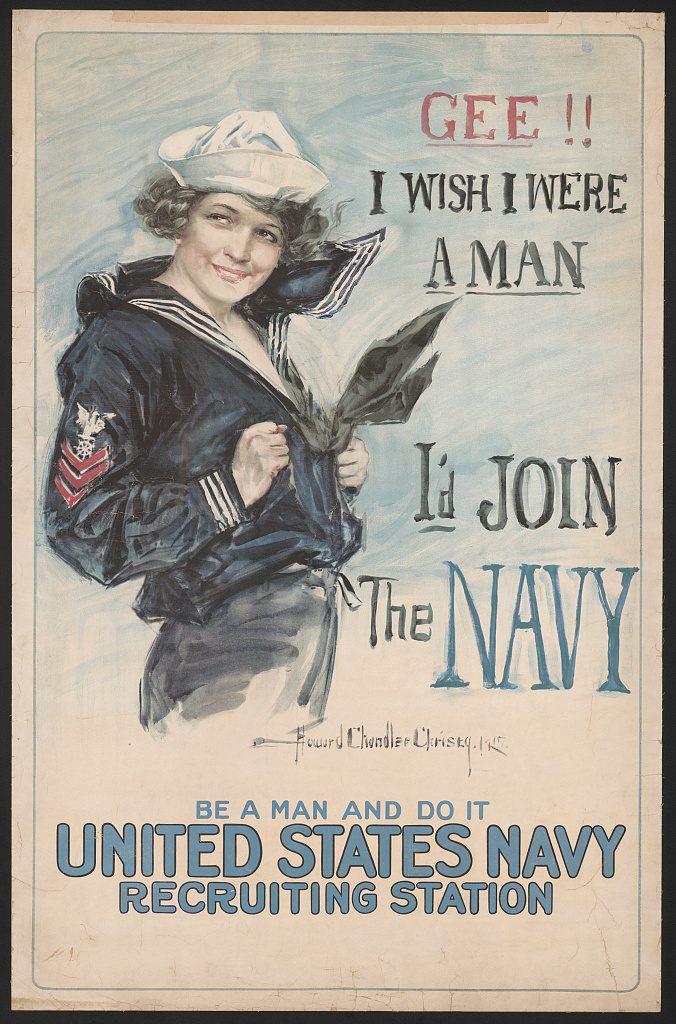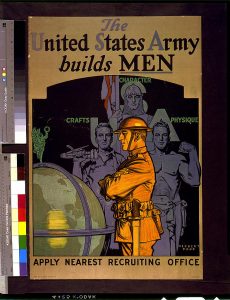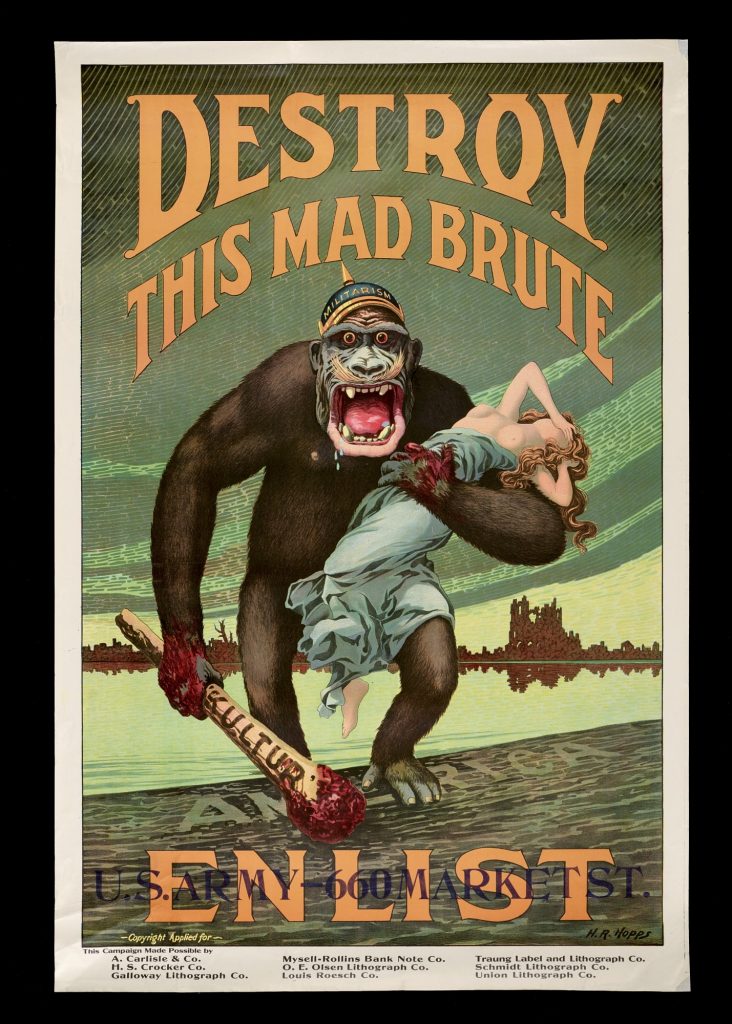Howard Chandler Christy, “Gee!! I wish I were a man, I’d Join the Navy. Be a man and do it. -United States Navy Recruiting Station,” Lithograph, 1917

Howard C. Christy created this poster in 1917, near the end of the first World War. Although the location of publication is unknown, it is in collaboration with the United States Navy. Christy uses text and an illustration a young woman. Reading: Gee!! I wish I were a man and be a man and do it, Christy attempts to convince his young audience that joining the Navy would help anyone embody masculine traits. This source exemplifies the push for military masculinity, a common pressure exerted on young men in correlation to the war efforts. Like in many other war posters, female models were used for their sex appeal in hopes of driving men to visit their local recruiting office. This source can be found on the Library of Congress webpage under World War I Posters.
Herbert Andrew Paus, “The United States Army builds men. Apply nearest recruiting office” Lithograph, 1919

Herbert A. Paus created this source in 1919 and published it in Buffalo, New York. In collaboration with the United States Army, Paus uses text and symbolism that embody military masculinity in order to convince his audience to join the branch. In the background of the image, there are three masculine models that represent the traits that can be gained from recruiting in the Army: Crafts, Character, and Physique. It can be inferred that these are the traits that make up an ideal Army soldier. By claiming that the Army builds men, the artist alludes that no other profession can do the same, making it more convincing for his young audience to feel intrigued. This source can
Harry R. Hopps, “Destroy this Mad Brute” Poster, 1917-1918

Harry R. Hopps created this poster between 1917 and 1918, towards the end of World War One. The location of publication is unknown, however, it is in collaboration with the United States Army. Hopps created this piece in order to depict Germans as hyper-masculine invaders who terrorized and conquered European regions during the Middle Ages and aggressive beasts who needed to be checked by manfully and morally superior Allied forces. In this poster, he portrays Germans as a massive gorilla with a Pickelhelm labeled “militarism” as he steps on the America continent with a bloody bat. By depicting Germans as bestial, savage, and aggressive, he attempts to convince men that the nation is making an implicit call on the bravest men to defeat the monsters that Germans are portrayed as. This source can be found on the National Museum of American History webpage under collections.
The Treatment of Some Common War Neuroses. (Lancet, June 9th, 1917.) Adrian, E. D., and Yealland, L. R.

Created by E.D Adrian and L.R Yealland, M.D., this document uses scientific evidence and inferences in order to invalidate Shell Shock as a medical condition and declare it as emasculate. Although this document was created in 1917, the publication location is unknown. The author uses illegitimacy as a theme in order to convince readers that shell shocked men succumbed to their own “weakness of will…, intellect, hyper-suggestibility, and negativism.” It was believed that these traits caused and lengthened their psychological breakdown after the Great War. Together with other research papers, shell shocked men were stereotyped as abnormal and unmanly men for their cowardice and weakness of will. Since some soldiers were unable to meet the masculine standards of proficiency, character, and fortitude, they were classified as abnormal and effeminate men. This source was found on Courtney Kramer’s Emasculated Men: The Perception and Treatment of Shell-Shocked Soldiers During World War I in its bibliography section. A full version was found via Google Scholar.
